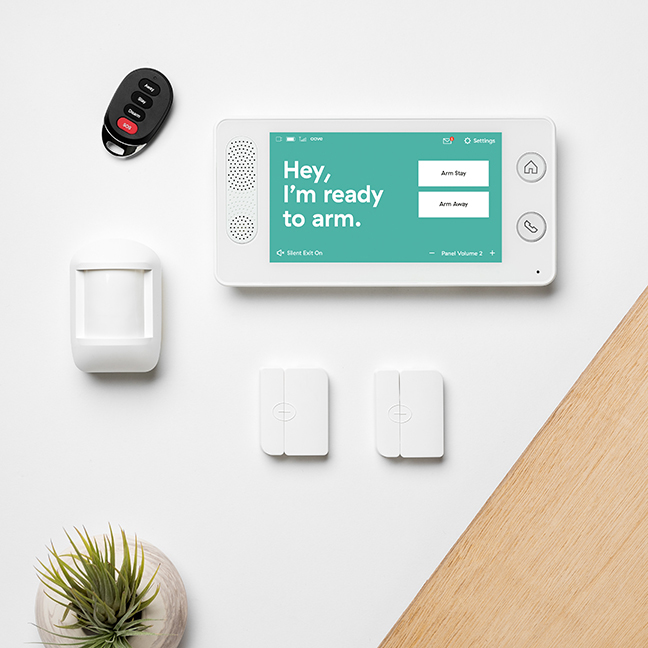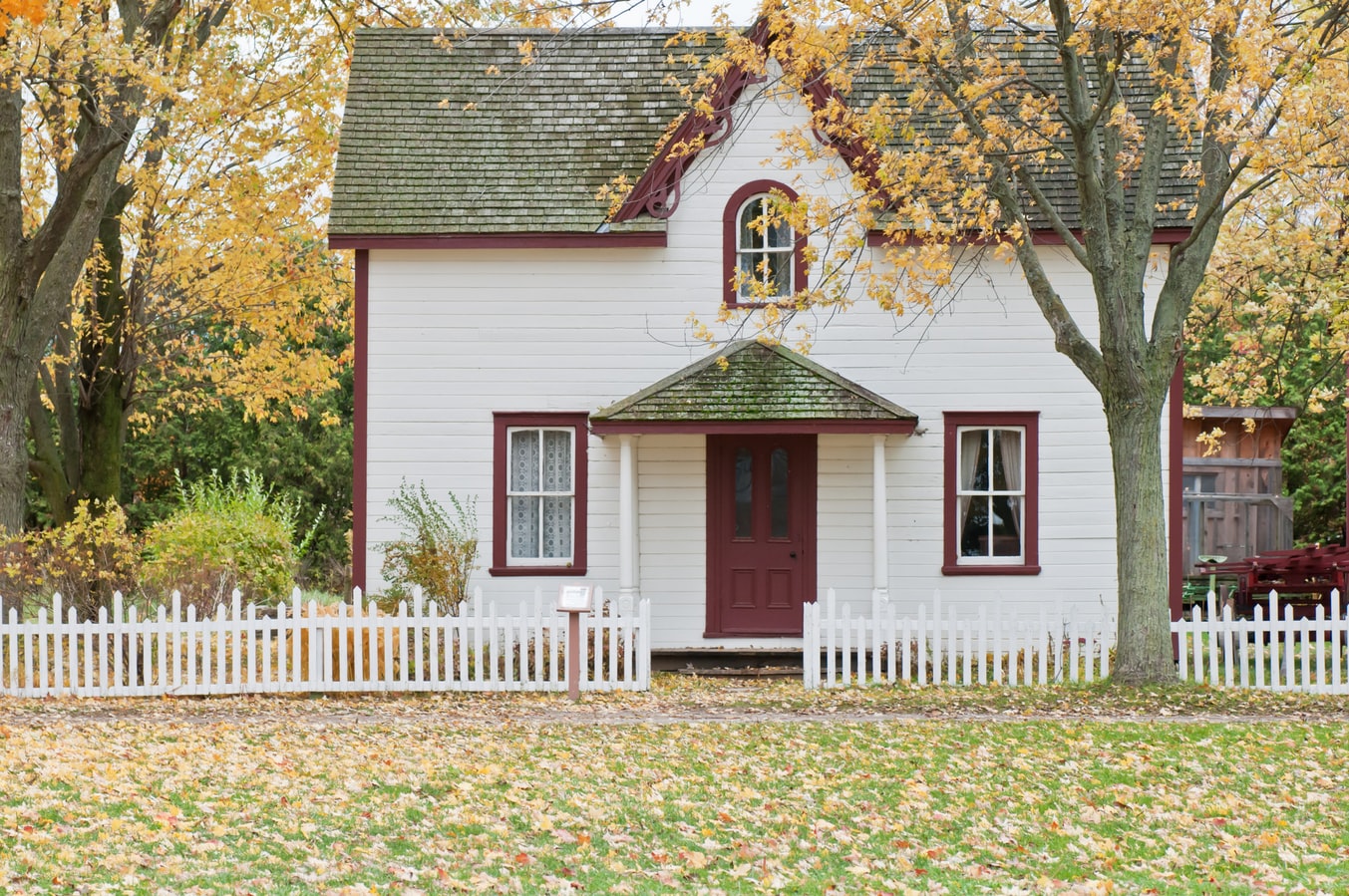Everything You Need to Know About Motion Detector Lights
Motion detector lights are convenient, easy to use, and cost effective. Millions of people use them inside and outside of their homes. They are a simple technology that we take for granted and often don’t know much about.
In this article, we will ask and answer 14 questions about motion detector lights so that you can better understand this useful piece of home security.
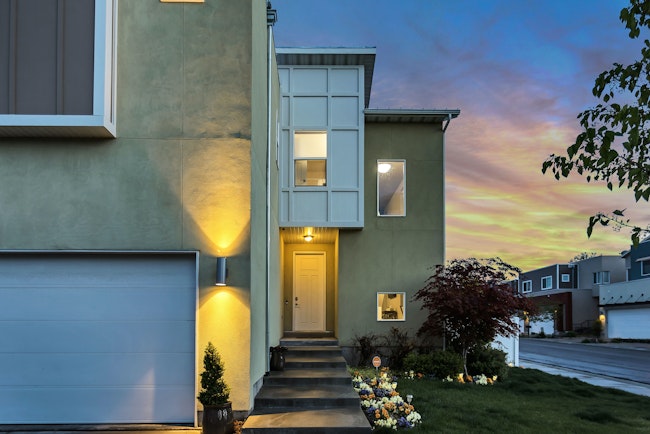
1. How Do Motion Detector Lights Work?
If you’ve read our page about motion activated cameras, then you are familiar with some of the different types of motion activated technology. This means you already know how motion detector lights work, because the different technologies that power motion activated cameras are the exact same technologies that power motion detector lights.
Whatever the type of sensor, motion detector lights use specialized technology to detect movement and turn on the lights. Here’s a basic rundown of how each type of motion detection works in the context of motion detection lights.
Heat Detection Sensors
Some motion detection technology utilizes sensors to detect heat differences. If the sensor detects a sudden change in temperature, like, say, a body, crossing in front of it, the lights will flip on. This type of motion sensor would be best utilized for an indoor motion detector light instead of an outdoor one.
Signal Blockage Sensors
Another type of motion detection technology detects blocked signals. Whenever something crosses in front of the sensor, it physically blocks the signal that the sensor is emitting, letting the lights know that there is movement and that it is time for them to turn on. This type of sensor is great for both indoor and outdoor motion detector lights.
Light Change Sensors
Light change detectors track ambient light and turn on your lights whenever they detect a big enough change in lighting. This type of motion detector light is usually used outdoors and is most often set to activate only when it is dark outside, like a front porch light.
Contact Sensors
Based off of their name alone, it is pretty easy to figure out how contact sensors work. Usually placed on doors or windows, contact sensors activate when the direct signal from one part of the sensor to the other is interrupted. This happens when the door or window they are fastened to is opened.
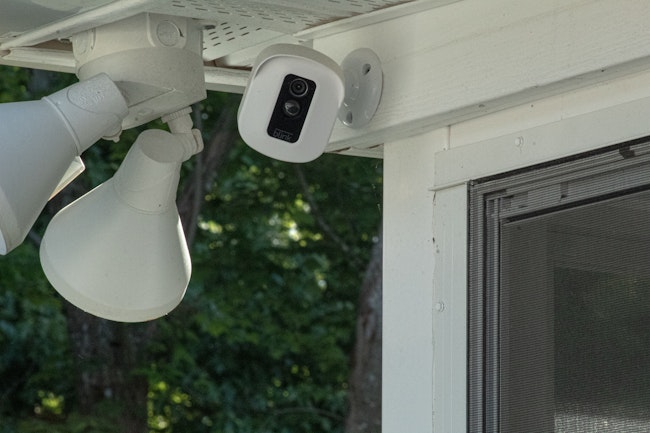
2. What are Common Features of Motion Detector Lights?
Beyond the information shared in the previous question, there are other common features of motion detectors. Of course, whether a motion detector light has any of these features will depend on the manufacturer, so be sure to check specifics before you buy.
Adjustable Working Modes
Many motion sensor lights will have modes you can adjust depending on your preference. These modes may include a timer, which tells the light how long to stay on after detecting movement; sensitivity, which adjusts how responsive the motion light is to motion; and lux, which sets the light to turn on depending on how dark it is outside.
Ambient Light
Ambient light, or accent light, is something to consider when looking at outdoor safetly lighting. Ambient lights compliment the main lights by adding secondary lighting in places that the main lights don't cover. Ambient lighting could be smaller lights in less direct places, or even down on the ground. Having more ambient lights near walkways and around porches will not only help friends to see where they are walking, but to deter burglars since they will be more easily seen.
Time Delay
This is how long the light will stay on. If motion is detected but then motion stops, the light will turn off after a certain amount of minutes. You can change the setting depending on the device.
Sensor Sensitivity
The sensitivity setting on a motion sensor light refers to how much movement is required before a light goes off. Do you want any slightest movement to activate the light, or would you rather have more movement trip it? This is something many homeowners must adjust until they find that sweet spot.

3. What Activates Motion Detector Lights?
The question of what sets off motion detector lights can be answered very straightforwardly: anything that moves can set them off. That is, after all, the purpose of having a motion detector light.
Indoor motion detection lights can be activated by your family walking into a room or by your curtains fluttering in the wind. If your motion detector lights are activated by heat, your air conditioning and heating unit could even turn your lights on. This would happen if your sensor is placed too close to a vent, and you can prevent this from happening by making sure you keep any sensors that are activated by temperature changes at least 15 feet away from vents.
Outdoor motion detection lights can be activated by passing cars, approaching visitors, or even rustling leaves in nearby trees. Sometimes bugs or spiders that crawl across your lights’ sensors can even trigger your lights to turn on.
Nobody wants their lights turning on every time the wind blows, so adjusting the sensitivity of your sensors can help you get your lights to turn on only when you want them.
Pets
If you have pets, they will likely trip the motion detector lights, depending on their size and movement. A big dog will likely set it off. If this becomes bothersome, adjust the sensitivity level on your motion detector light. This will probably fix the problem. If it doesn't, you could also move the motion detector light, or make sure your pet stays away from the area at night.
People including Adults and Children
Obviously people are going to set off the motion detector light. That's what it was intended to do, right? Of course, the aim is to deter criminals. So the hope is that the motion sensor light will go off and keep them from approaching your home. But even friendly adults and even children will set off the motion sensor lights. This is a good thing, even if it can be bothersome if you have lots of people passing by your home. You might want to try placing your motion detector light in a slightly different area to see if that helps.
Cars
A car is a large object that when in motion, will definitely set off a motion detector light. If this happens when you drive up your own driveway, it's a good thing as it will help you better see where you are driving and where you're walking when you get out of your car. The light will also trip if a friend or stranger's car approaches your motion detector light, which will alert you when
Trees
Will tree movement set of your motion detector light? It depends on several factors, including size of the tree and branches, as well as the strength of the wind. If this is happening a lot, you can try adjusting the sensitivity setting on your motion detector light so it is less likely to go off when the wind blows.
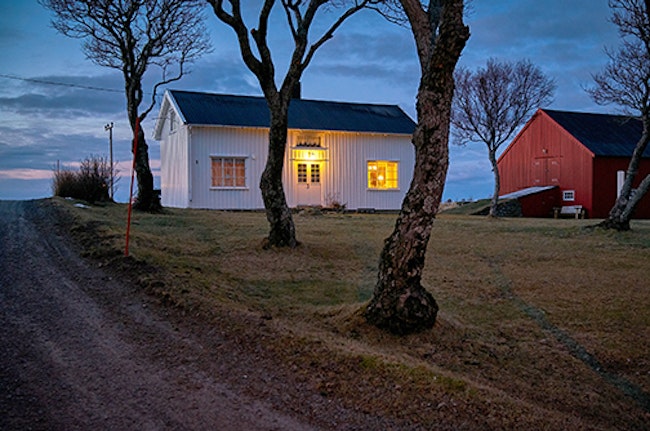
4. Where Should I Put My Motion Detector Sensors and Lights?
The placement of the sensors for your motion detector lights requires a little bit of careful consideration. Whether you’re placing lights inside or outside of your home, you want them to turn on at the right time. This means you need your sensors to see what you want them to see when you want them to see it.
Strategic placement will help your motion detector lights work for you.
Sensor Height
The higher you place your sensors, the larger their field of view will be. For this reason, you want to place motion detector light sensors above head height.
The best height to place a motion detector light sensor is 6–10 feet above the ground. This gives your sensor a wider view of activity within its field of view without setting its vision too high. A sensor placed too close to the ground would only pick up on the movement of people or animal’s feet, and a sensor placed too high up would potentially miss a lot of regular, everyday movement.
The optimal location for a sensor is high enough that it will catch movement up above around the height of your head but not so high that it will miss movement closer to the ground. That sweet spot is found between 6 and 10 feet. When in doubt, however, it is always best to follow the manufacturer’s guidelines. You can find their recommended sensor height on your sensor’s packaging or by taking a quick look at the product pages on their websites.
Sensor Location
The placement of your sensors will depend on your objective. The two main objectives for using motion detector lights are (1) convenience and (2) security.
If you are placing a light for convenience inside of your house, for example, you typically will only want that light to activate whenever you enter the room where it is placed. This means putting your sensor somewhere where it can see the mouth of the door but not into the hallway. If the sensor did have a view of the hallway, it would turn on your lights whenever someone so much as walked by.
You want your sensor to have a broader field of view when you are placing it for security purposes. This means placing it on corners where it can have a broad view of its surrounding area and placing it higher up on the wall for more visibility.
Inside Lights
Motion detector lights placed inside of your house increase convenience and decrease your electric bill. If you can’t get your sensors in the right place, though, motion detector lights are less effective than manual switch lights.
Consider placing motion detection sensors for your lights in the hallways outside of bedrooms. It is smart to place them inside of each room that is frequently used, including bedrooms, kitchens, living rooms, and laundry rooms. You’ll also want a sensor in your home’s entryway so that your lights will turn on every time you come inside. This is especially helpful if your hands are full when you enter the house, like when you’ve just done a big grocery haul.
Place each sensor where it can have an unobstructed view of the entire room, and if you have a heat sensor, make sure you keep it away from any vents. This will minimize false alarms.
For increased security, consider placing sensors around valuables that you have inside of your home. This could frighten thieves who approach those objects and are met with the lights suddenly turning on. It could also alert you to a thief’s presence inside of your home.
Avoid placing sensors where they have a good view of any windows. Windows cause problems for motion sensors because the sensor can pick up on motion that is happening outside of the house and mistakenly turn on the lights. Windows can also cause heat sensors to misfire when direct sunlight comes through the window and hits the sensor.
Outside Lights
People usually want their outdoor motion detector lights to turn on when they approach their home. To accomplish this, you will want to place sensors so that they cover your walkway, driveway, front porch, and garage door. For the backyard, you’ll want to place sensors where they have a view of your back door, patio, and stairways. If you have any areas that could be dangerous in the dark like a swimming pool or a hot tub, take special care to place sensors around those areas.
Most outdoor motion detector light sensors are designed to see anywhere from 50–80 feet. If you are placing outdoor sensors for security purposes, take extra care to ensure that your sensors are covering areas of your property where an intruder would likely walk, like a footpath.
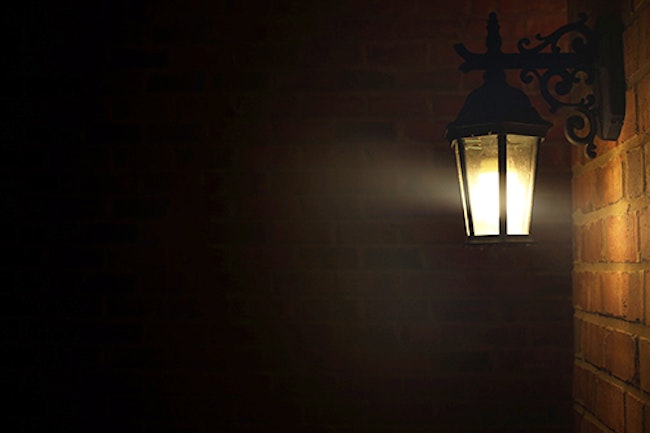
5. Do My Motion Detector Lights Need a Switch to Work?
Seeing as motion detector lights were created to turn on without you having to flip a switch, you do not have to have a switch to have motion detector lights. Having a switch that attaches to your lights, however, expands your lights’ capabilities.
Indoor and outdoor motion sensor lights that have a manual switch let you turn them on and off manually, which can be really convenient for checking if a light bulb has burned out. Sometimes a motion sensor light will appear to have burned out when in reality its sensor is just blocked. Having a manual switch lets you check if the light can be turned on and off manually, which will let you know if your light actually needs to be replaced.
6. Can I Set My Motion Detector Lights to Stay Off for a Time?
Getting your motion detector lights to turn off and stay off is another available function if you have a switch attached to your light. Whether you don’t want your porch light turning on after you’ve gone to bed or you want to pretend like nobody is home, it is possible to override your motion sensor and make it so your lights turn off.
You’ll want to check with the manufacturer of your motion detector light to confirm how to override the motion sensor function of your lights if you want them to stay off for a time. For most lights, it will be as simple as flipping the lightswitch to the off position.
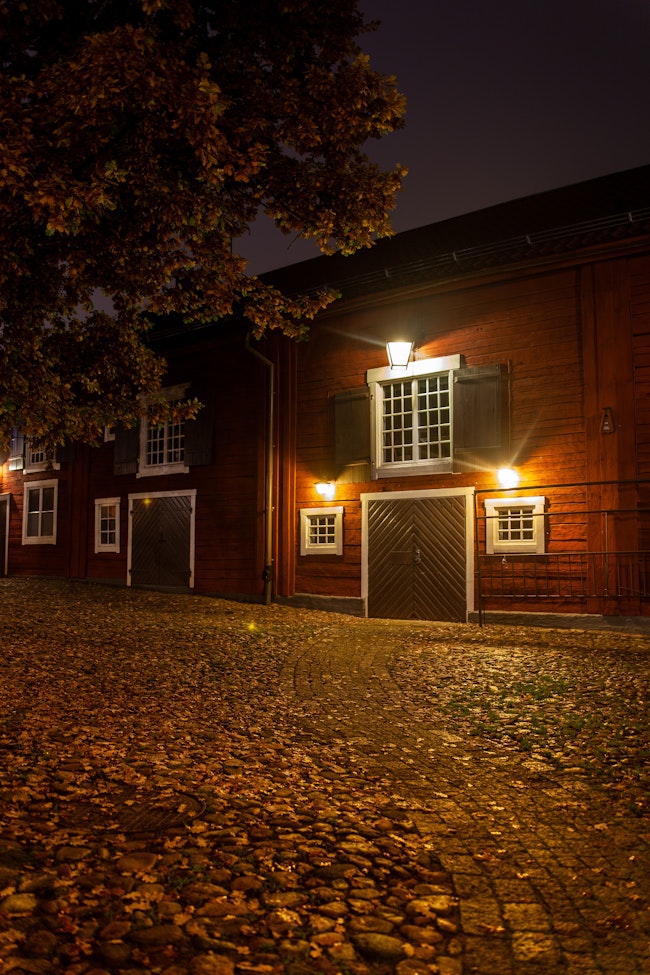
7. Is It a Good Idea to Set My Motion Detector Lights to Stay On or Off?
A common home security practice involves leaving porch lights on throughout the night to prevent burglary. The idea behind it is that burglars will deduce someone is home and pass on to the next house. But does this practice actually do anything to deter crime? Is it a good idea to override the timing sensor of your light and keep it on? And is it ever a good idea to override your motion sensor and make sure your lights stay off?
Lights on to Deter Burglars
The first thing to know when making a decision about keeping your motion detector lights on is that manually setting porch and indoor lights to remain on has not been shown to reduce crime or deter burglars. Most people who are planning a break-in do their research and plan out what they are going to do before they commit the crime. This can involve staking out a house and taking note of the daily schedules of the people who live there. Most robberies take place during either the workday or when families are on vacation because the robbers have done their research and know that nobody will be home.
Because burglars prefer to come prepared when they plan on robbing a house, leaving your porch or home lights on won’t do a lot to deter burglars since they will likely already know whether or not you and your family are home.
An alternate idea to leaving your lights on to deter burglars is utilizing timers. Consider setting the lights inside your home to turn on in different rooms throughout the day to mimic movement. You could also put your porch light on a timer so that it turns on in the evening but then turns off when it is bedtime. This will make your empty home appear more natural and lived-in.
There are some situations where it is smart to override the settings of your lights, so let’s take a look at what those are.
When to Keep Your Porch Light On
If you are home in the evening, it is a good idea to have your porch light on. This clearly indicates your presence inside of your home and invites visitors. It is also wise to set your porch light to stay on if you are expecting someone to come to your home late in the evening. Whether you have a visitor coming in from out of town or a child who has a later curfew, keeping the porch light on until they are inside the house will make their walk inside safer and easier.
Many people opt to not override their motion detector lights’ timer function when they have people coming to their home late at night because the motion detector function will illuminate the person’s path as soon as they approach anyway. While it does feel more welcoming to have a light turned on in anticipation of someone’s arrival, it is more energy efficient to let a light turn on only when it is needed.
When to Turn Your Porch Light Off
Turn your porch light off when you are going to bed at night. Since leaving your port light on throughout the night does not deter burglars, it is both eco-friendly and money smart to turn your porch light off when you go to bed.
You should also turn your porch light off when you are planning on being away from your house for a few days. It is uncommon for anyone to leave their porch light on during the day, so it is a big red flag if yours remains on for days at a time. Leaving your porch light on while you are gone just so it will look like someone is home at night will alert burglars to your absence.
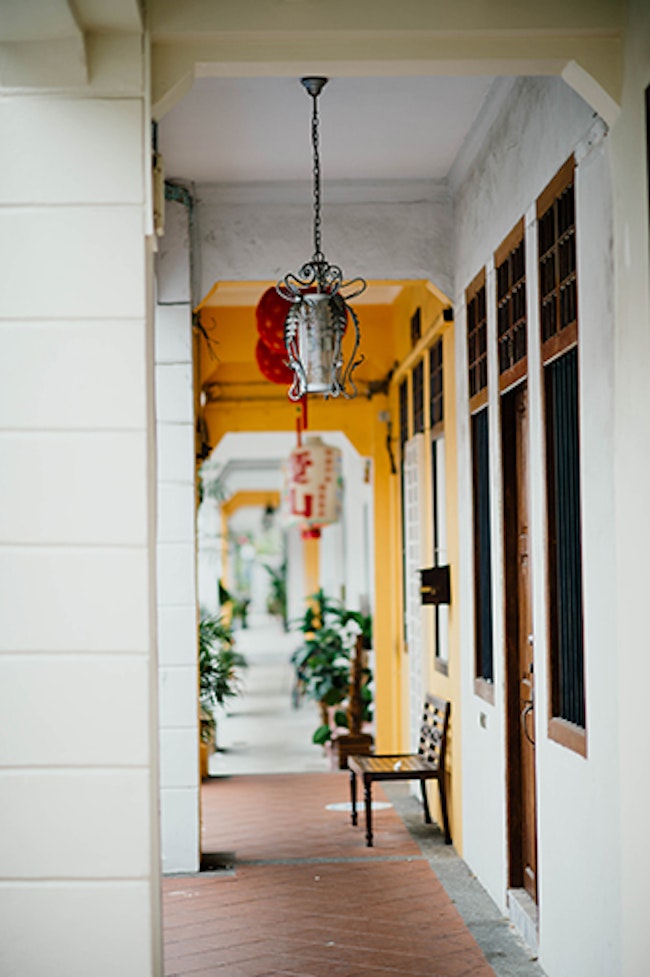
8. How Can Motion Detector Lights Help My Home Security?
If a lit porch light doesn’t do much to deter burglars, how are motion detector lights any different? How do they help home security?
A well-lit house is an easy and cheap way to deter unwanted intruders. Lights draw attention, and the last thing a burglar wants is someone knowing that they are there. Since motion detector lights turn on whenever they sense movement, an intruder who triggers your lights will be put in the spotlight and easily seen.
Another way your motion detector lights can help your home security is by working in conjunction with a security camera. Setting up a camera to start recording whenever your motion detector lights are triggered lets you capture footage of potential hazards on your property while promoting energy efficiency since your camera and lights will remain dormant until they are triggered.
Motion detector lights can also help you stay safe as you walk at night. If you are coming home late or are expecting visitors, having automatic lights will light your walkways and make your journey safer.
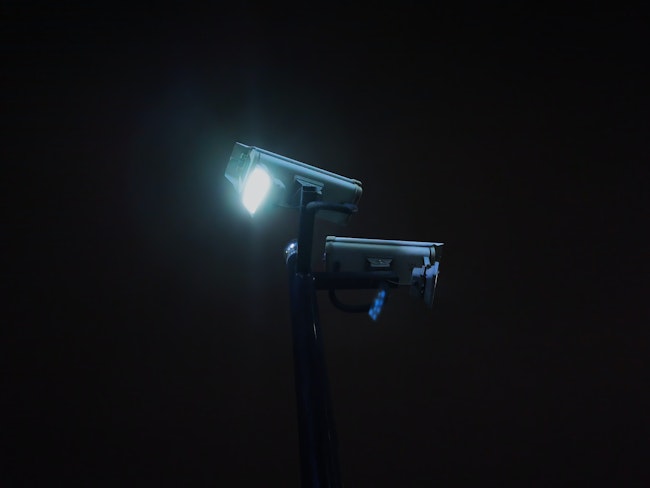
9. How Long Do Motion Detector Lights Stay On?
Every motion detector light is a little bit different, and each model will be programmed to stay on for a different amount of time. On average, a motion detector light will stay on for up to 20 minutes. That amount of time is extended each time a sensor detects fresh movement, so it is possible for a motion detector light to stay on for much longer than 20 minutes at a time.
When you install motion detector lights, you have the ability to choose how long each light will stay on. Customizing the amount of time each light stays on is a smart move because it can potentially lower your power bill. If you have a motion detector light in a storage room, for example, you might want it to only stay on for five minutes. Most people go into a storage room, find what they are looking for, and then leave immediately after. If this is true for you, it doesn’t make sense to have a light that is programmed to stay on for 20 or more minutes while you’re not using it.
On the other hand, you might want a motion detector light that you’ve placed in your living room to stay on for longer than 20 minutes. A light that will stay on for a longer amount of time makes sense in high-traffic areas, especially if you are planning on participating in a stationary activity like reading a book.
It is equally energy efficient to customize the amount of time your outdoor motion detector lights stay on. It makes more sense for motion detector lights to stay on for a long time when they are placed on a back patio where you might have social gatherings than it does for a light in front of your garage where people don’t usually gather to stay on for a long time.
10. Does Weather Affect Motion Detector Lights?
The simple answer to this question is that weather does not do a lot to affect motion detector lights. Some sensors are more sensitive in colder temperatures, but it is more likely that storms will interfere with your lights than anything else. Strong winds or falling rain might move plants and porch decorations around, setting off your lights. The chances of this happening is relatively rare, and you can always adjust the sensitivity of your motion sensor so that it doesn’t go off for movements small enough to be caused by inclement weather.
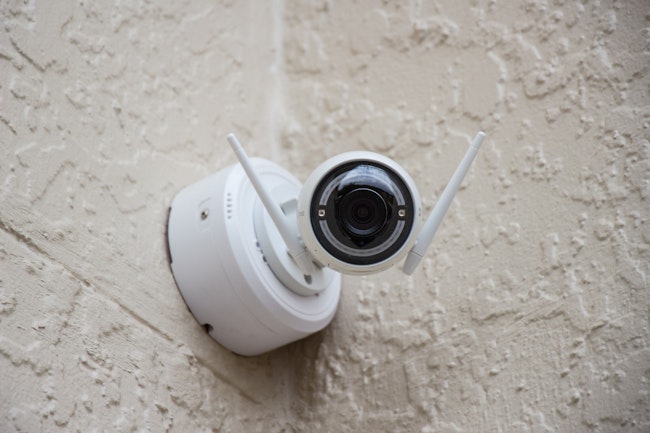
11. How Can I Troubleshoot My Motion Detector Lights?
Since motion detector lights are designed to turn on whenever they sense any movement, they can be set off really easily. This means that you might get a handful of false alarms, like if a bug flies across your outdoor motion sensor and turns on your lights.
If you live alone or in an area where you are nervous about your safety, false alarms can be nerve-wracking. These false alarms are actually one reason why some people stray away from using motion detector lights. The good news, however, is that you can solve the problem of unwanted false alarms by adjusting the settings in your motion detector lights.
The first thing you’ll want to do if your motion detector lights are turning on too frequently or staying on for too long is a simple troubleshoot. Simply take your motion detector sensor and check its surrounding area. Make sure that nothing has fallen in front of your sensor that could be causing it to frequently turn on or stay on. A spider that built a web in front of your sensor, for example, could turn your light on every time it crawled past the sensor.
If you cannot see anything in front of your sensor, try temporarily moving it to a new location. If your lights continue to misbehave while the sensor is in a new location, you can know that the problem was not the sensor’s environment, but that there is something wrong with the actual equipment. And if the lights work normally when the sensor has been moved, then you’ll know you need to investigate a little bit more. Check to see if your heating or air conditioning vents could be blowing on your sensor or on the nearby curtains, alerting your sensors to movement.
If your lights are still turning on too frequently or staying on after moving things around, it is time to restart your motion detector lights. Make sure that your lights and your light switches are set on auto, not manual.
The next step is to adjust your light’s settings. Your lights and sensors can be customized so that they only turn on when things move at a certain distance from the sensor. They can also be customized to only turn on when large enough objects cross in front of their path. Say you have a dog that is constantly setting off your motion detector lights. You can adjust your light’s settings so that they don’t turn on unless something that is more than 100 pounds passes in front of your sensor.
If none of the above works to get your lights behaving as they should, it might be time to replace your sensors. Try contacting the company where you bought your lights to see if they offer a warranty or if they have any suggestions for fixing your lights before going out and making a purchase.
Resetting Motion Detector Lights
If your motion detector light is not working properly, you may need to reset it. Exactly how to reset it will depend on the device, so be sure to read the owner's manual.
To reset most motion detector lights, unplug it from its power source and wait for several seconds before plugging it back in and turnign it on. This should reset it. You could also turn the light on and off rapidly several times, then hold it on the off position before turning it on again. This should reset it as well.
Replacing or Fixing or Troubleshooting a Light
Many times, companies will replace a motion detector light free of charge. Check with the company you ordered it from. Contact customer service and let them know how long you've had it and how it came to stop working. It may end up being a manufacturer error. Or there may be a warranty.
To troubleshoot or possibly fix a malfunctioning motion sensor light, first check the bulb. If it hasn't lived out its life yet, perhaps the wind or other force hit it too hard. Simply replace the bulb to see if this fixes the issue. If not, try "resetting" the motion detector light as outlined above. Also test to see if the sensor element responds--if not, then that element may be to blame and you might need a new part.
Adjusting a Motion Detector Light
As you install and use your motion detector light, you may need to adjust where the light points. This should be fairly easy to do. Simply angle the light up or down until it is at the desired location. While you're at it, make any other adjustments, like sensitivity, etc. Check your product manual for specific instructions. As you test it out, see where you have to walk before the light turns on. If it's not providing enough coverage, keep adjusting your light, or install a second light.
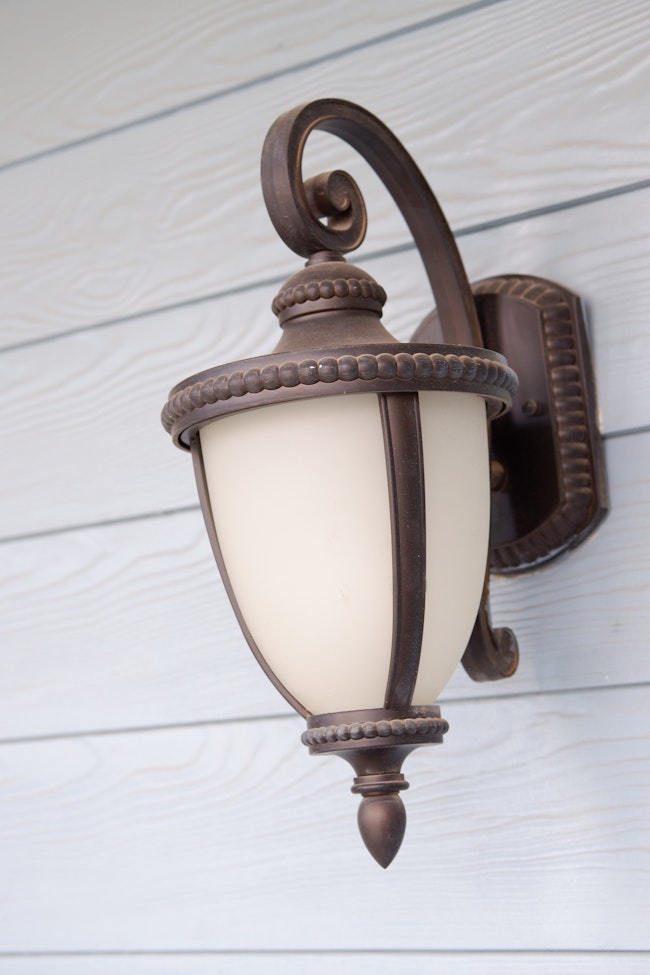
12. How Do I Choose the Right Kind of Motion Detector Light?
When it comes to choosing a motion detector light, ask yourself this: What do I want to protect? Your answer is most likely that you want to protect your home, your poessesions, and everyone in your home. In that case, you want to keep intruders out. Criminals who want to steal items from your home or who could potentially cause bodily harm.
Motion detector lights can alert you of outdoor movement after dark, illuminating potential areas someone might be hiding. Motional detector lights can also let preditors know that you are watching, hopefully deterning them from going any closer to your home.
But there are different types of motion detector lights to choose from. Ones with different bulb types, ones that require different power sources, etc. Check out the ones below to see which ones might work best for you and your home.
Passive Infrared Sensor
This is one of the most used types of motion sensors/detectors for home security. Passive infrared (PIR) motion sensor technology is a good option for anyone looking to keep intruders out. That's because rather than only detecting all motion, it focuses on passive infrared, or changines in the levels of energy in the area.
A PIR motion sensor works by looking for infrared radiation. Infrared radiation is a naturally emitted body radiation that all living creatures give off, from humans to animals.
The passive infrared motion sensor is able to detect infrared radiation in the form of body heat, specficially the rapid uprise in heat within the field of view. This feature allows motion sensors to tell the difference between a tree branch swaying in the wind and a child running across the lawn.
Microwave Sensor
Rather than body heat, a microwave motion sensor relies on high frequency radio waves to detect movement. This works similarly to radar as the waves bounce off an object.
Microwave motion sensors are ideal for very large spaces like industrial spaces. The microwave motion sensor can have a big view and detect motion pretty quickly. One downside, however, is that it detects any sort of motion, so it has the potential to have a higher rate of false alarms. It typically costs more can be vulnerable to electrical interference.
Dual Technology Motion Sensor
As the name denotes, a dual technology (sometimes referred to as "hybrid") motion sensor utilizes two types of technology to watch for movement. Many dual tech motion sensors use PIR and microwave. These work together well.
For example, if the PIR detects an increase in temperature, it will triger the active microwave sensor to look for movement. A big plus of a dual tech motion sensor is that it can "see" more while at the same time lessening the amount of false alarms.
Area Reflective Sensor
An area reflective sensor lets off infrared rays from an LED, which can then bounce off of objects and return to the sensor, where the intesity goes up. That increase is what detects the object in question and whether it is moving.
Ultrasonic Sensor
An ultrasonic sensor lets off ultrasonic sound waves that then bounce off objects and return to the sensor. A moving object will disrupt these waves and trigger the sensor.
Vibration Motion Sensor
A vibration motion sensor detects the changes of velocity or "vibrations" caused as a person moves in front of it.
Contact Sensor
A contact sensor are two small pieces that share a magnetic field. When each piece is placed near the other, such as on a window or door, when closed the contact sensor stays quiet. If that "contact" is broken, like when a window or door is open, the magnetic field is disturbed and the sensor sends a message to the control panel.
At Cove, we recommend placing contact sensors on all outside doors and all first-floor windows, plus any other windows you want monitored. Not sure exactly what equipment you need? Take this quiz, which asks questions about your house or apartment, and we'll give you recommendations.
Video Motion Sensor
Aside from sensor devices, there are also video versions. These are security cameras that are made to detect motion and will alert you if there is motion. It also has the added benefit of recording the motion so you can view it.
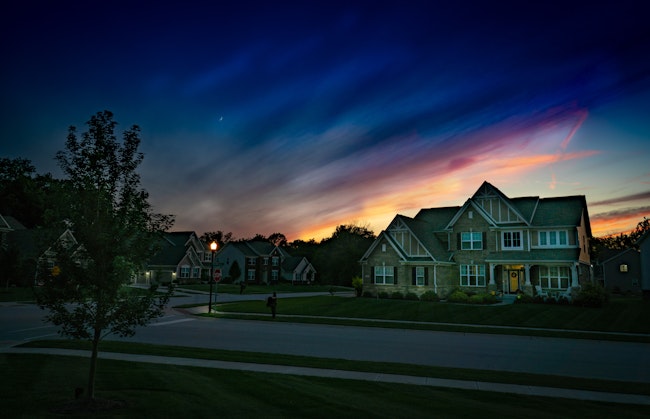
13. How Do I Mount a Motion Detector Light?
How to install a motion detector light will depend a lot on its power souce. Is your motion detector light battery-operated or solar-power operated? Or does it require a hardwire powersource?
If it runs on batteries or solar power, then installation will be pretty easy. Simply follow the directions that came with the light. Most will need to be drilled onto the outside of the home or garage, depending on the best placement option for you.
Lights that require hardwire take a bit more time and skill to install, but the nice thing is that you never have to change the battery or worry if it has enough power from the sun. If you don't feel comfortable installing a motion detector light, call an electrician.
If you proceed to install yourself, make sure to follow all the directions that came with the device, and always turn off the power if you are working where there are live wires. The easiest approach to installing a hardwired motion sensor light is to swap out where an existing light fixture already is on the house. This makes it easy to utilize the power and opening already that already exists.
We highly recommend hiring an electrician to install your motion detector light if you'd like to place it in a spot where no lights exist yet. An electrician will be able to tell you if it's possible and safely do the work.
Cove’s Motion Detectors
While Cove doesn't currently have motion detector lights on its list of equipment, it does have other devices that sense motion. For outdoor, it uses doorbell cameras and outdoor cameras. These cameras detect motion and will alert you whether you're home or away.
For inside the home, Cove has window sensors and door sensors, which when activated will alert you when the window or door opens.
Additionally, Cove has a motion detector, which is a device you can place in main areas of your home that will detect motion while you're asleep or away from your home.
Cove also has an indoor camera which detects motion and allows you to see what's happening.
14. Why Choose Cove Smart Security?
Motion detector lights are a useful resource for home security. So are other motion sensor devices. However, what happens if there is motion but you don't see the light, or you're not home to investigate? You won't know if someone is coming to your home. And if the criminal is motivated enough or figures out no one is actually home, they may continue to go inside.
That's why we recommend a whole home security system. A device like a motion detector light or a doorbell camera are good things to have, but they can only go so far. To protect your home from every angle, whether you're home or away, an entire system is the best solution.
At Cove, we make building your system simple. Click below to take our quiz. It'll take just a minute to answer questions about how many outside doors you have, how many first-floor windows, and so on. Once you're done, our website will show you what equipment we recommend. From cameras to sensors to the control panel that syncs them all, each piece works together to make your home safe.
Now here is where professional monitoring comes in. Some people may be hesitant because they think it's expensive or they'll get locked into a long-term contract. Or they believe they don't need professional monitoring.
Cove never requires contracts. Plus we have a 60-day money-back guarentee, so you can try it out risk free. If you don't like it, return the equipment for a full refund. If you do go forward, our two monitoring plans amount to less than $1 per day.
With professional monitoring, if you're away from home, you can have peace of mind that your home is secure. If a threat is detected, police will be contacted. Plus, the cameras can capture anything that crosses their paths, and you can take a look at the footage. Cove uses the RapidSOS system, which alerts authorities quicker with the needed info, ensuring you get better reponse times. Worried about false alarms? Sometimes that happens. If a camera or sensor detects something, it'll text you and call you, so you can see if the threat is valid and either cancel the alert or continue to contact authorities.
At Cove, we believe everyone deserves to feel safe. Let us help you protect your home. Ready to get started? Click "take quiz" below or call us anytime and our helpful customer service agents will assit you.
Ready to get started?
Take this short quiz to build your customized system today!
Takes less than a minute

